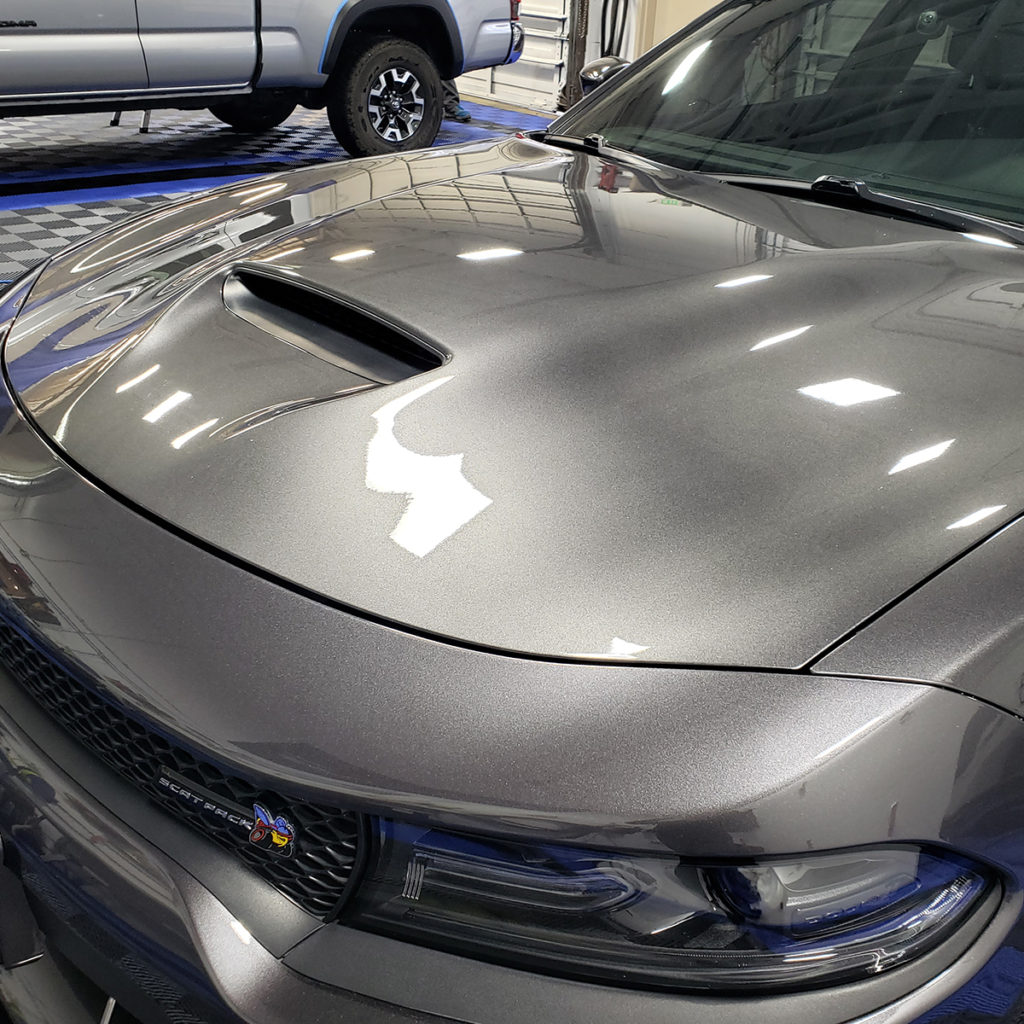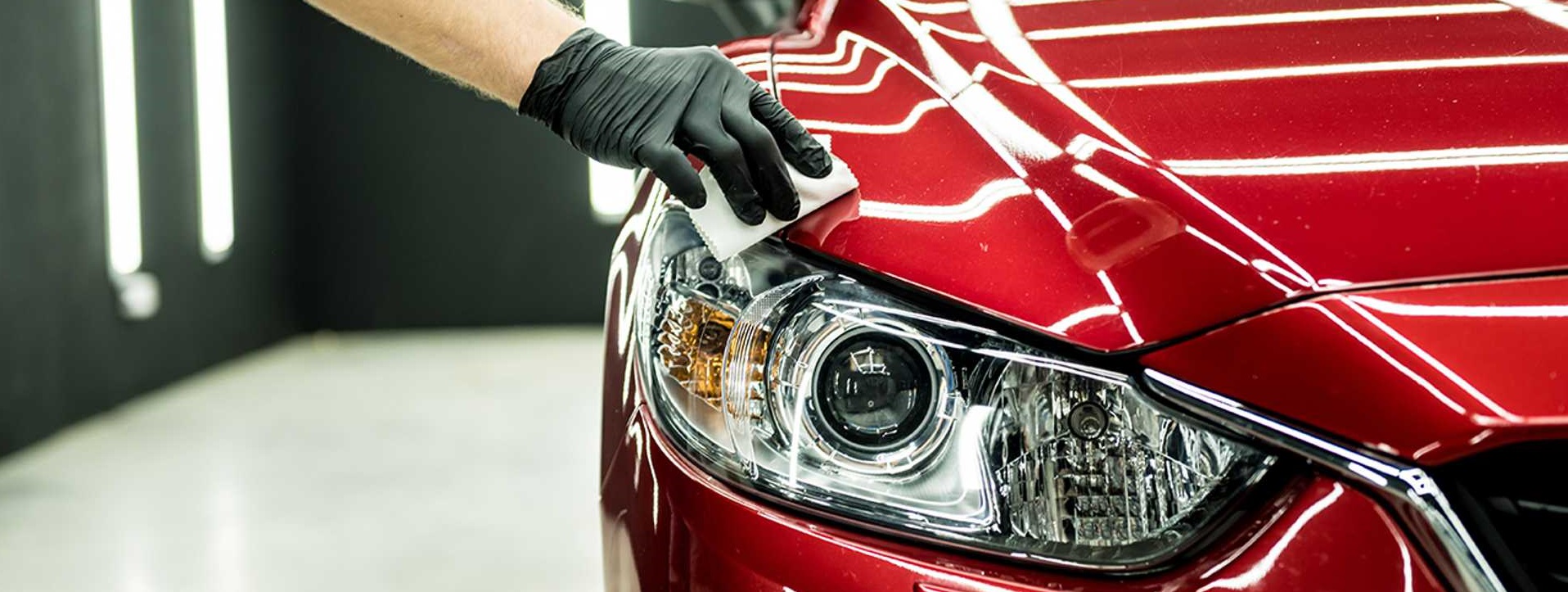Uncover how ceramic coating beats traditional methods.
Uncover how ceramic coating beats traditional methods.
Blog Article
Exactly How Ceramic Finishing Shields Your Cars and truck's Paint and Maintains It Looking New
Ceramic covering has arised as a prominent remedy for automotive paint security, providing a robust protection versus a variety of environmental threats. By producing a semi-permanent bond with the automobile's surface, it properly seals tiny flaws and supplies a guard versus oxidation, dust, and UV damages. This not just preserves the aesthetic appeal of the cars and truck yet additionally simplifies upkeep routines. Yet, the complexities of exactly how this technology functions and its benefits over standard methods call for a closer evaluation, disclosing compelling factors to consider this innovative strategy for your lorry.
What Is Ceramic Finishing?
Ceramic finishing is often considered as an advanced improvement in auto paint protection. ceramic coating. This advanced item is a liquid polymer that chemically bonds with the car's manufacturing facility paint, creating a protective layer that enhances durability and visual charm. Unlike traditional wax or sealers, which supply only temporary security, ceramic coatings use lasting results, often extending a number of years with proper upkeep
The primary parts of ceramic finishings are silicon dioxide (SiO2) and titanium dioxide (TiO2), which contribute to their hydrophobic residential or commercial properties. This hydrophobic nature allows water to grain and roll off the surface, successfully avoiding impurities like dirt, crud, and bird droppings from adhering to the paint. Vehicles treated with ceramic finishes require less constant washing and are simpler to maintain.
Furthermore, ceramic coatings supply UV defense, which helps stop oxidation and fading of the paint due to sun direct exposure. This facet not only preserves the auto's aesthetic charm yet also adds to its resale value with time. Overall, ceramic finishings stand for a significant leap ahead in the world of auto care, providing a robust option for lorry proprietors seeking to preserve their investment.
Exactly How Ceramic Finish Functions
How does the process of ceramic covering produce a powerful obstacle versus ecological dangers? Ceramic layer contains a fluid polymer that chemically bonds with the manufacturing facility paint of a vehicle. This bond forms a protective layer that is both hydrophobic and resilient. The primary element of ceramic finishings is silica dioxide (SiO ₂), which supplies remarkable firmness and durability against scratches, UV rays, and other external contaminants.
When applied correctly, the coating penetrates the microscopic pores of the paint surface area, developing a semi-permanent bond. This causes a smooth, shiny surface that enhances the vehicle's visual allure while simultaneously fending off water, dirt, and grime. The hydrophobic nature of the coating makes certain that pollutants slide off easily, lowering the frequency of washing and the probability of scratches throughout cleaning.

Advantages of Ceramic Coating
The application of ceramic covering provides various advantages that considerably enhance the protection and appearance of a vehicle's paint. One of the key advantages is its capacity to produce a robust, hydrophobic layer that wards off water, dirt, and other contaminants. This residential or commercial property not only maintains the surface area cleaner for longer periods but also makes cleaning the automobile much easier and less labor-intensive.
Additionally, ceramic coatings give premium security against hazardous UV rays, which can lead to oxidation and fading with time. ceramic coating. This UV resistance assists maintain the initial shade and gloss of the car's paint, thereby maintaining its aesthetic appeal for several years
Moreover, ceramic coverings are chemically immune, using protection versus acidic pollutants such as bird droppings, tree sap, and road gunk. This resistance helps protect against etching and staining, which can compromise the honesty of the paint.
Finally, the resilience of ceramic layers prolongs beyond traditional waxes and sealers, frequently long-term a number of years with correct maintenance. This resilient protection inevitably translates into price savings, as automobile owners can minimize the regularity of reapplication and maintenance initiatives. Overall, ceramic finishings stand for a significant financial investment in lorry care.
Contrasting Ceramic Coating to Conventional Approaches
Frequently ignored in the pursuit for optimal car security, the contrast between ceramic finishing and typical methods such as waxing and sealants exposes substantial distinctions in resilience, performance, and upkeep. Typical waxes typically offer a brief safety layer, often lasting just a couple of weeks to a number of months, while sealants can prolong this period to numerous months. On the other hand, ceramic coatings offer a robust, lasting shield that can withstand for a number of years when effectively applied.
In terms of performance, ceramic finishings display remarkable hydrophobic homes, successfully driving away water and impurities, which prevents dust and crud from sticking to the surface. This building not only improves the lorry's look yet also simplifies the cleansing procedure. Conventional waxes and sealers, while they might use some water resistance, do not match the level of protection provided by ceramic coverings.
The upkeep regime for both alternatives deviates significantly. While typical methods require regular reapplication and upkeep, ceramic finishes are made to endure the rigors of day-to-day driving with minimal intervention, making them an extra effective option for auto enthusiasts seeking long-term protection. Inevitably, the option between ceramic layer and standard methods rests on the preferred level of protection and maintenance dedication.
Upkeep Tips for Ceramic Coated Cars
Maintaining a ceramic covered vehicle calls for a tactical method to make sure the long life of the protective layer. Regular cleaning is necessary. Use a pH-neutral hair shampoo and microfiber wash gloves to prevent scraping the coating while article successfully removing dirt and impurities. Aim to wash your lorry every two weeks, or a lot more regularly in harsh conditions.
Additionally, avoid automatic cars and truck cleans that make use of brushes, as these can compromise the integrity of the ceramic finishing. Rather, choose a touchless clean or a hand clean. After cleaning, drying out is important; make use of a top quality microfiber towel to avoid water areas.
Applying a ceramic-specific maintenance spray can improve the finish's hydrophobic residential or commercial properties and add an additional layer of security. This ought to be done regularly, depending upon your driving conditions.

Verdict
In verdict, ceramic finish acts as an effective safety procedure for automotive paint, supplying a long lasting barrier versus environmental home damages and improving the car's aesthetic allure. Its special properties, including hydrophobicity and UV protection, add to long-lasting sparkle and cleanliness. Contrasted to typical techniques, ceramic coatings existing remarkable performance and long life, ultimately reducing upkeep efforts. Adopting ceramic finish innovation can dramatically prolong the life-span of a car's outside, ensuring it stays aesthetically appealing and well-protected.
Report this page